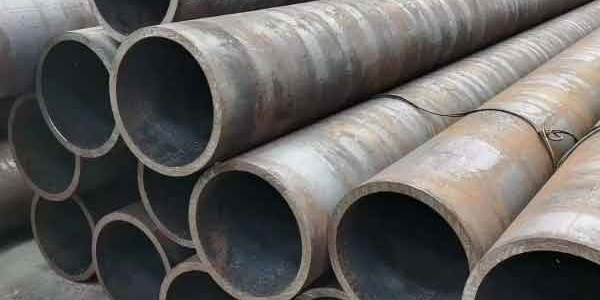
1. The production process of seamless steel pipe mainly includes the following steps:
a. Preparation of raw materials: choose suitable steel billet, the requirements of the billet surface smooth, no bubbles, no cracks, no obvious defects.
b. Heating: Heat the billet to a high temperature state, so that it has plasticity and is easy to be molded.
c. Perforation: The heated billet is perforated into a billet by a perforating machine, i.e., the preliminary pipe is formed.
d. Pipe Rolling: The billet is rolled several times to reduce its diameter and increase its wall thickness, while eliminating internal stress.
e. Sizing: through the sizing machine on the final shape of the steel pipe, so that the diameter and wall thickness of the steel pipe to meet the standard requirements.
f. Cooling: The steel pipe is cooled after sizing to increase its hardness and strength.
g. Straightening: Straighten the cooled steel pipe to eliminate its bending deformation.
h. Quality inspection: quality inspection of the finished steel pipe, including size, wall thickness, hardness, surface quality and other aspects of the test.
2. Quality control of seamless steel pipe
In order to ensure the quality of seamless steel pipe, need to control from the following aspects:
a. Raw materials: select high-quality billets to ensure that the surface is free of defects, bubbles, cracks. At the same time, to ensure that the chemical composition and mechanical properties of raw materials in line with the standard requirements
b. Production process: Strictly control the various processes in the production process to ensure that the quality of each process is stable and reliable. Especially in the process of piercing and rolling, the temperature and pressure should be strictly controlled to avoid cracks and deformation.
c. Dimensions: Conduct dimensional inspection on the finished steel pipe to ensure that its diameter and wall thickness meet the standard requirements. Specialized measuring instruments can be used for measurement, such as micrometer, wall thickness gauge, etc.
d. Surface quality: the finished steel pipe is tested for surface quality, including surface roughness, the presence of cracks, folding and other defects. Visual inspection or specialized testing instruments can be used for testing.
e. Metallographic organization: The finished steel pipe is tested for metallographic organization to ensure that its metallographic organization meets the standard requirements. Generally use microscope to observe the metallographic organization and check whether there are microscopic defects.
f. Mechanical properties: Mechanical properties testing of finished steel pipe, including hardness, tensile strength, yield strength and other indicators. Tensile testing machine and other equipment can be used for testing.
Through the above quality control measures, we can ensure that the quality of seamless steel pipe is stable and reliable, and meet the needs of various application fields.

 English
English Español
Español




 Tel : +86-18565811709
Tel : +86-18565811709 Email :
Email : 

 News
News




